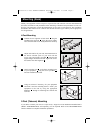
9
Basic Operation
continued
Other UPS Features (Rear Panel)
AC Receptacles: Your UPS features 15- and 20-amp AC outlets. These output
receptacles provide your connected equipment with AC line power during nor-
mal operation and battery power during blackouts and brownouts. The UPS pro-
tects equipment connected to these receptacles against damaging surges and line
noise. If you have a serial or USB connection to your UPS, you can remotely
reboot connected equipment by turning the receptacles OFF and ON using Tripp
Lite's PowerAlert Software. The receptacles are divided into one or more load
banks (labelled “LOAD 1,” etc.) which may be remotely switched OFF and ON
using Tripp Lite UPS software without interrupting power to equipment con-
nected to the other outlets. Outlets labelled “UNSWITCHED” may not be
remotely switched off. See software instructions for details.
Communications Ports (USB or RS-232): These ports connect your UPS to any
workstation or server. Use with Tripp Lite’s PowerAlert Software and included
cables to enable your computer to automatically save open files and shut down
equipment during a blackout. Also use PowerAlert Software to monitor a wide
variety of AC line power and UPS operating conditions. Consult your
PowerAlert Software manual or contact Tripp Lite Customer Support for more
information. See “USB and RS-232 Serial Communications” in the “Optional
Installation” section for installation instructions.
EPO (Emergency Power Off) Port: Your UPS features a EPO port that may
be used to connect the UPS to a contact closure switch to enable emergency
inverter shutdown. See Optional Installation.
Accessory Slot: Remove the small cover panel from this slot to install optional
accessories to remotely monitor and control your UPS. Refer to your accessory’s
manual for installation instructions. Contact Tripp Lite Customer Support at
(773) 869-1234 for more information, including a list of available SNMP, network
management and connectivity products.
Voltage DIP Switches: These switches enable you to set the UPS to match actual
input voltage. If the Voltage DIP Switches are set above or below input voltage, the
UPS will treat the input as a continuous overvoltage or undervoltage condition, and
will automatically adjust input voltage to match the Voltage DIP Switch setting.
This will cause constant, unnecessary wear on the UPS system. Note: The Voltage
DIP Switches must be set with the UPS turned OFF and disconnected from
utility power. If the switches are set while the UPS is connected to utility
power, the setting will not take effect.
15 amp/120V
NEMA 5-15R
20 amp/120V
NEMA 5-20R
200607114 93-2586 SMART2200RMXL2U OM.qxd 7/21/2006 2:04 PM Page 9


















